Discover whether or not it's safe to eat raw green beans.
Raw green beans are a great source of nutrients and can be a healthy addition to your diet, but it's important to understand the potential risks involved and how to minimize them.
Green beans and other legumes are considered high-risk foods, especially when served raw. Several food safety concerns surround the products, which require close monitoring by food handlers. In this article, we give food handlers a thorough review and answer to the question, "Can you eat raw green beans?"
Can you eat green beans raw?
Yes, you can eat green beans raw. You can also eat other legumes in raw form. But food handlers should always consider the health risks when serving raw legumes. Beans and other legumes are highly susceptible to foodborne pathogens and other food safety risks. As such, food businesses are advised to cook beans before serving.
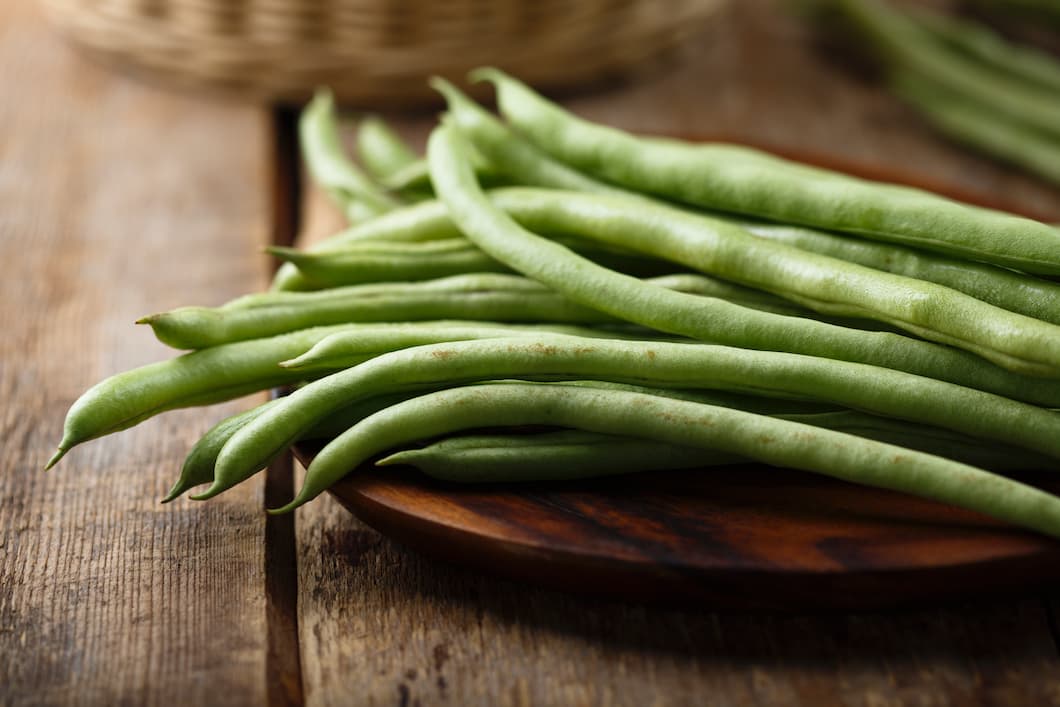
To reduce the risk of foodborne illness and other food safety concerns, it is important to properly clean and prepare raw green beans before consuming them. This can be achieved by washing the green beans thoroughly with water and removing any dirt. It is also important to store raw green beans in the refrigerator to prevent the growth of harmful bacteria.
If your business serves raw green beans, you have to ensure that the ingredients you use are sourced from a reputable supplier.
Key points from this article
- While you can eat green beans raw, the risk of foodborne disease is significantly higher than when consuming them cooked.
- Legume is a term used for a group of vegetables under the Fabaceae family.
- Legumes are known rich sources of vitamins, minerals, and essential nutrients.
- The food safety risks that come with consuming raw green beans include nutrient loss, allergic reactions, digestive tract disturbances, and foodborne illness.
- Use FoodDocs smart Food Safety Management System to monitor and ensure food safety compliance when handling raw legumes.
How to cook raw green beans?
Green beans can be cooked in a variety of ways, including boiling, steaming, sautéing, and roasting. These raw ingredients do not need extensive preparation before cooking.
Here is an example of a basic method for preparing and cooking green beans:
- Wash the green beans in water and remove any stems or ends.
- Bring a pot of water to a boil.
- Add the green beans to the boiling water and cook for 3-5 minutes or until they are tender while retaining their green color.
- Drain the green beans and immediately transfer them to a bowl of ice water to stop the cooking process and preserve their color and texture. Always remove the excess water.
- Once the green beans have cooled, drain them again and pat them dry.
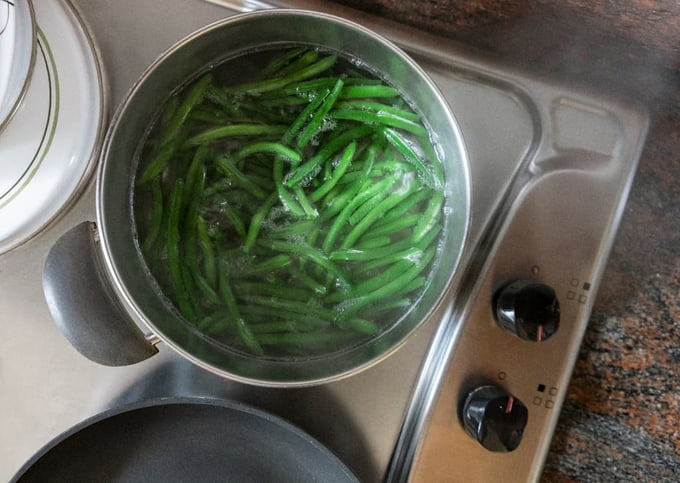
Alternatively, you can steam the green beans in a steamer basket over boiling water, sauté them in a pan with oil or butter, or roast them in the oven at 400°F (204°C) for 15-20 minutes. Cooking green beans brings out their natural sweetness.
It is generally recommended to cook green beans to an internal temperature of 135°F to 140°F (57°F to 60°C). This internal temperature is sufficient to inactivate the potentially present harmful bacteria on green beans and inactivate anti-nutrients. Use a properly calibrated thermometer to ensure accurate temperature readings.
Now, let's learn more about how you can make your customer's experience in consuming green beans and other legumes more safe and enjoyable.
What are legumes?
Legumes refer to a collective term for a type of vegetable that is in the Fabaceae family. They are widely distributed across the globe and are consumed as a rich source of protein, soluble fiber, vitamins, and minerals. Legumes are popular options for vegetarians and vegans as a source of protein and low-calorie food, and nutritious snack.
Legumes include a wide range of different vegetables and are an essential component of the human diet. Some types of legumes are considered a staple in some cultures.
From a food safety perspective, legumes are generally safe to consume if prepared and cooked properly. Some legumes, like soybeans and lentils, are known to have a significant amount of anti-nutrients. These components prevent nutrient absorption by the body and can be toxic if consumed in high amounts.
Other concerns involving legumes are their susceptibility to contamination by foodborne pathogens like Salmonella and E.coli. Despite this, proper handling and cooking can reduce these food safety hazards to acceptable levels.
What are the different types of legumes?
Legumes are a diverse group of plants that encompass a variety of species, each with its own unique flavor and nutritional profile. Depending on the type of legumes, preparation and precautions may also vary.
Here are some of the common types and examples of legumes used in the food industry:
-
Beans. Beans are one of the most well-known types of legumes. Some common types of beans include black beans, kidney beans, string beans, french beans, navy beans, and pinto beans. Beans are high in fiber, protein, and minerals such as iron and calcium for good bone health.
-
Lentils. Most types of lentils are small, lens-shaped legumes that come in a range of colors, including green, brown, and red. They are a great source of protein, ascorbic acid, dietary fiber, complex carbohydrates, and essential nutrients. Varieties of lentils are often labeled according to their color, such as brown, green, red, and yellow lentils.
-
Peas. These legumes come in several varieties, including green peas, snow peas, and snap peas. They are a good source of vitamins C, A, and K, as well as folate and fiber content. Some examples of peas include snap peas and snow peas.
-
Chickpeas. Chickpeas, also known as garbanzo beans, are a popular legume used in Middle Eastern and Mediterranean cuisines. They are a rich source of protein, fiber, and minerals such as manganese and copper.
-
Soybeans. Soybeans are a versatile legume that can be used to make a variety of products, including tofu, soy milk, and tempeh. They are high in protein, fiber, and omega-3 fatty acids, making them a nutritious addition to any diet. It is important to note that soybean is considered a major food allergen in the US and UK.
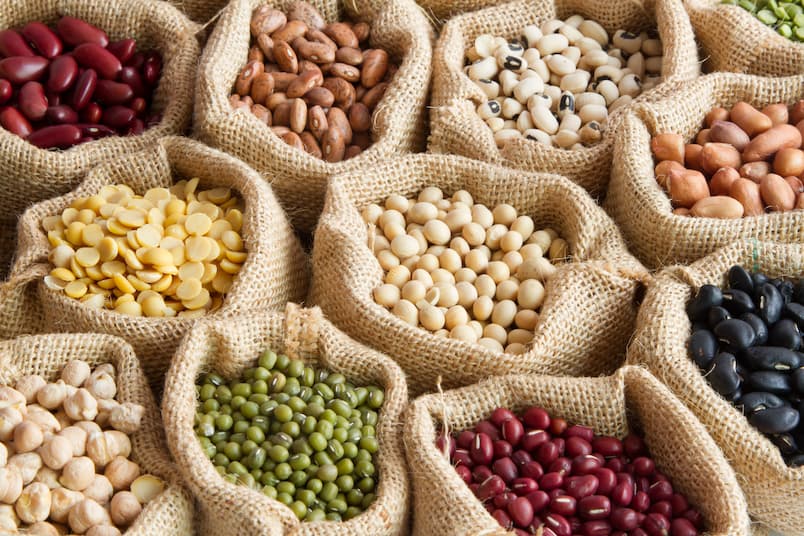
It is important to understand the different types of legumes and their potential food safety risks. Legumes can be a great addition to a healthy diet, but they can also pose a risk if not handled and prepared properly. By following proper food safety practices such as sorting, rinsing, and cooking legumes to the appropriate temperature, food handlers can help minimize the risk of harmful bacteria and ensure that their customers receive safe and nutritious meals.
Additionally, food handlers should be aware of the various types of legumes and their nutritional benefits to provide a variety of healthy options for their customers. By prioritizing food safety and nutrition, food handlers can play a crucial role in promoting the health and well-being of their customers and their communities.
What are the food safety risks associated with undercooked lentils and beans?
Undercooked lentils and beans can pose several food safety risks, primarily related to the potential presence of harmful bacteria and other pathogens. Lentils and beans, once rehydrated or when fresh, are considered high-risk foods like other green vegetables. Because of their nutritional content, they are susceptible to contamination.
Here are some particular food safety risks when consuming undercooked lentils and beans:
- Foodborne illness. Undercooked legumes are prone to food contamination. Reports of foodborne illness outbreaks related to lentils and raw beans have been recorded in the past. Undercooking allows any present biological contaminant to survive and cause foodborne disease.
- Foodborne illness. Undercooked legumes are prone to food contamination due to the presence of biological contaminants. Reports of foodborne illness outbreaks related to lentils and raw beans have been recorded in the past.
- Nutrient loss. Undercooking lentils and beans prevents the human body from absorbing their nutrients due to anti-nutrient compounds. Cooking to the correct internal temperature increases the bioavailability of the nutrients, such as proteins, iron, and zinc.
- Digestive issues. Legumes naturally have potentially toxic compounds, such as the presence of lectin content, which could cause an upset stomach when consumed in high amounts. This can cause disturbance in the digestive tract, stomach pain, nausea, and sometimes vomiting. In addition, undercooked beans and lentils are harder to digest and can cause bloating, gas, and abdominal discomfort.
- Allergic reaction. Some individuals may be allergic to certain types of legumes, and consuming undercooked legumes can increase the risk of an allergic reaction.
The risk of foodborne illnesses and other safety issues significantly increases when you serve undercooked or raw lentils and beans. Cooking these high-risk products is a vital control process for food businesses to protect public health from food safety issues.
Ensure proper food handling and compliance by using food safety management software that automatically generates monitoring logs and checklists. A smart Food Safety Management System will give you an intuitive solution for ensuring that your employees cook and handle lentils and beans properly.
Are kidney beans toxic?
Kidney beans can be toxic when eaten raw or improperly cooked. Raw or undercooked kidney beans contain a harmful toxin called phytohemagglutinin, which can cause severe gastrointestinal distress, including nausea, vomiting, and diarrhea.
In extreme cases, consumption of raw or undercooked kidney beans can lead to acute poisoning, which may require hospitalization. It's also important to note that kidney beans should not be consumed raw or sprouted, as this can increase the risk of foodborne illness and other health concerns.
Do red kidney beans have toxins?
Kidney beans contain the highest concentrations of lectins among legumes. When consumed in excess, high amounts of lectins can cause adverse side effects.
Kidney beans contain a toxin called phytohemagglutinin, also known as kidney bean lectin, which can be harmful if the beans are not cooked properly. This toxin is found in higher levels in raw or undercooked kidney beans and can cause severe gastrointestinal distress, including nausea, vomiting, and diarrhea. In extreme cases, consumption of raw or undercooked kidney beans can lead to acute poisoning, which may require hospitalization.
How long to cook kidney beans to ensure food safety?
To make kidney beans safe to eat, they must be cooked thoroughly. This means boiling them for at least 10 minutes or using a pressure cooker to ensure that they reach a temperature of at least 212°F (100°C) for a sufficient amount of time.
By properly cooking kidney beans before consuming them, you can enjoy their many health benefits without the risk of toxicity. Canned kidney beans are already cooked and safe to eat, as the canning process destroys the toxin.
How to safely handle green beans and other legumes with FoodDocs
When handling high-risk foods, such as the many types of legumes, food businesses must always be equipped with a comprehensive food safety system. Cooking and storage temperatures must always be properly maintained to prevent causing any food safety issues to consumers when serving dishes with legumes.
Using FoodDocs Food Safety Management System, you can easily monitor the proper conditions used to handle high-risk foods and ensure food safety compliance at all times.
When you use our smart software, you can get the following benefits:
- Get automatically generated monitoring forms and checklists that you can use for monitoring food handling procedures. These logs and checklists can be further customized and improved according to your operations. Some of the useful logs for handling legumes include:
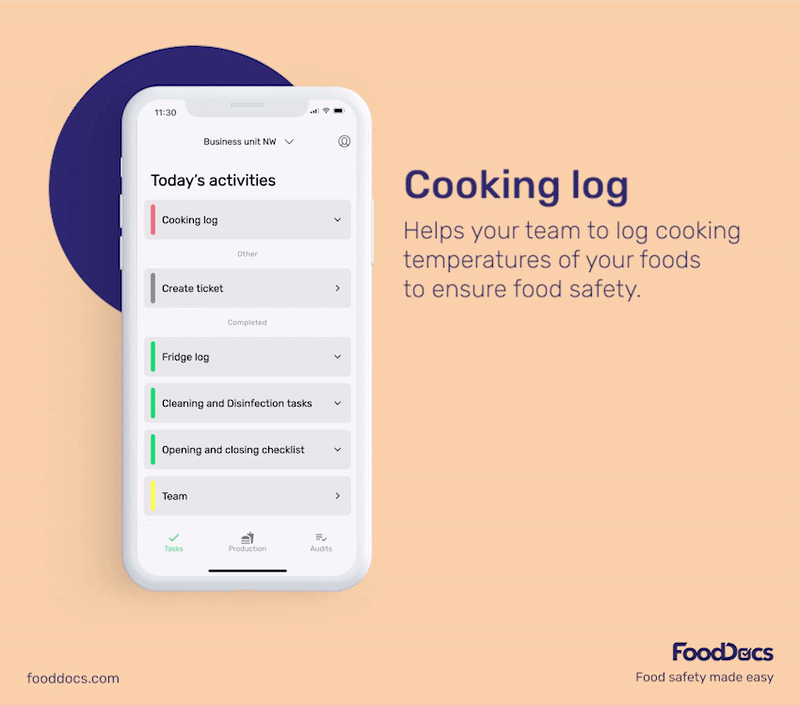

-
- Fridge temperature log
- Employee hygiene checklist
- All automatically generated monitoring logs are fully customizable. You can further improve the logs and checklists by incorporating applicable standards to your food business and adding more information.
- Each checklist and log comes with detailed instructions on how to perform and monitor the tasks. With this feature, you can ensure that employees will correctly perform food handling operations all the time. You can also upload your instructional images or videos.
- Use our built-in Production Traceability System. After creating your digital Recipe Book, you can set up a detailed Traceability System with just three clicks. This system automatically logs and computes the approximate shelf-life of each ingredient in your kitchen. Our Traceability System also sends alerts to concerned employees whenever an ingredient is about to go bad.
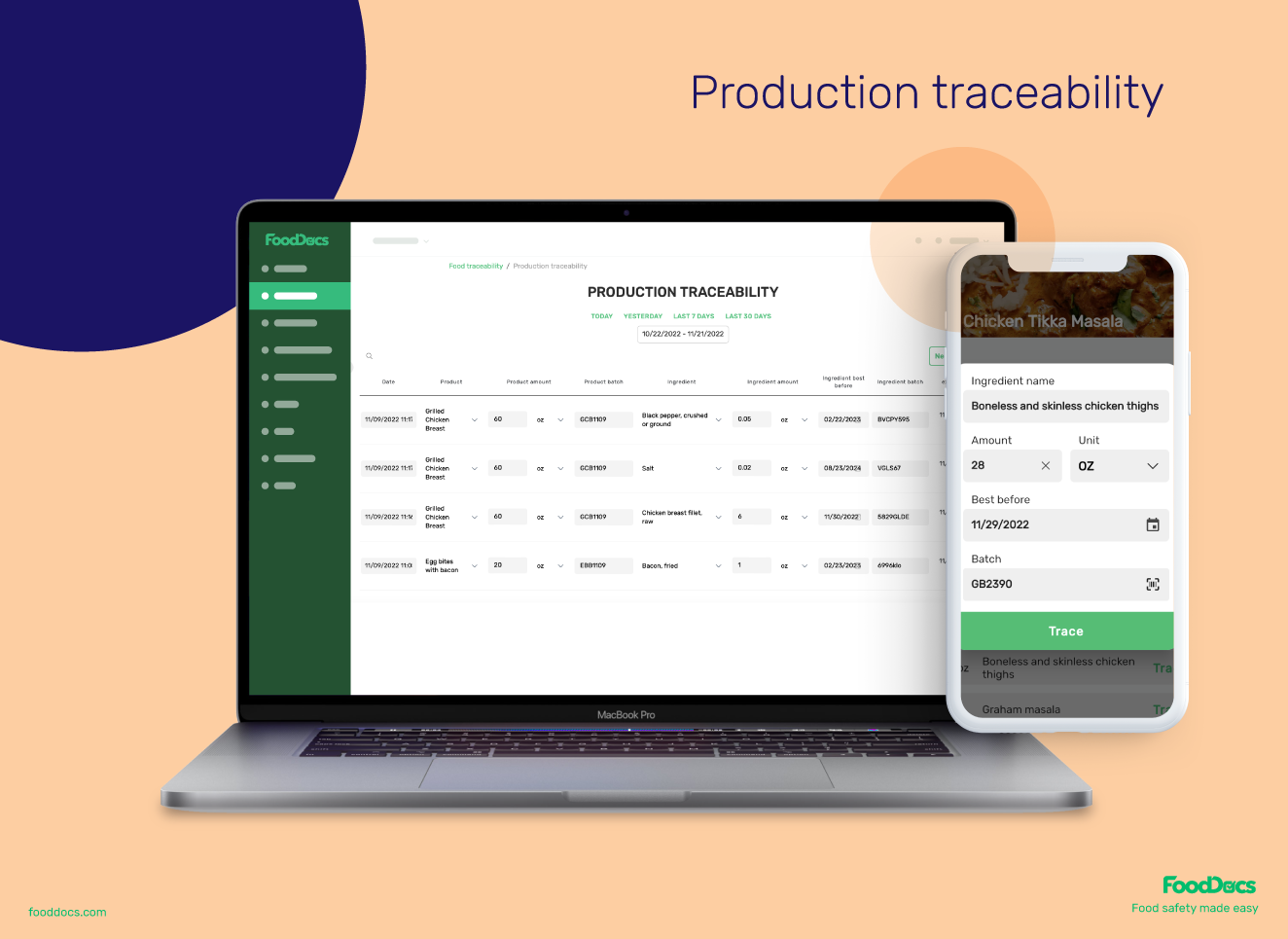

In addition to features for optimizing your ingredient use and improving food safety efficiency, our smart software can also help you boost your management efficiency.
- Save at least 20% of your time supervising your team with the use of our real-time dashboard. This feature gives you an overview of your entire operations and lets you manage your team remotely. Immediately identify areas that need more attention.
- Store and archive every food safety document in one digital cloud storage space. Access any document anytime and keep everything in place.
When handling high-risk foods, consistency in food safety operations is key. Using our smart software powered by artificial intelligence and a machine-learning program, you can efficiently monitor your operations and maintain compliance remotely.
Improve your automatically generated Food Safety Management System by customizing it to fit your operations even more.
Start your digital food safety compliance journey using our free 14-day trial.
